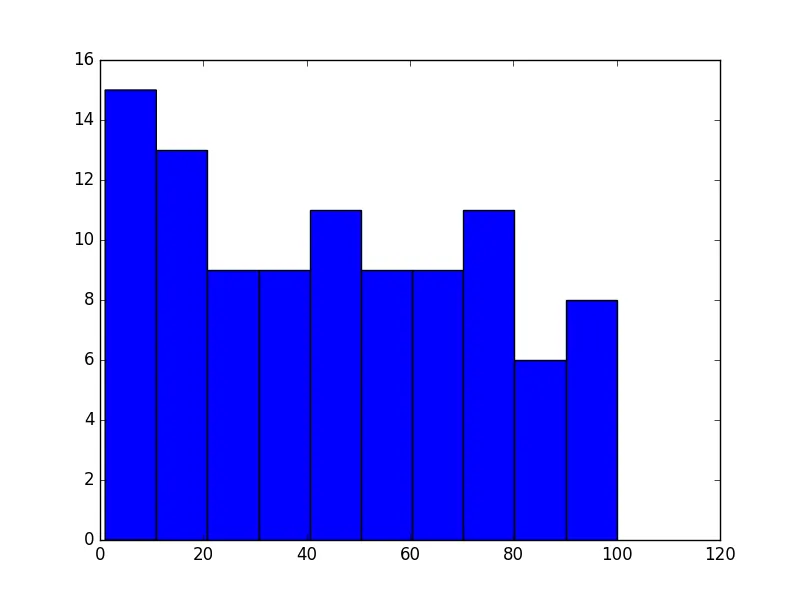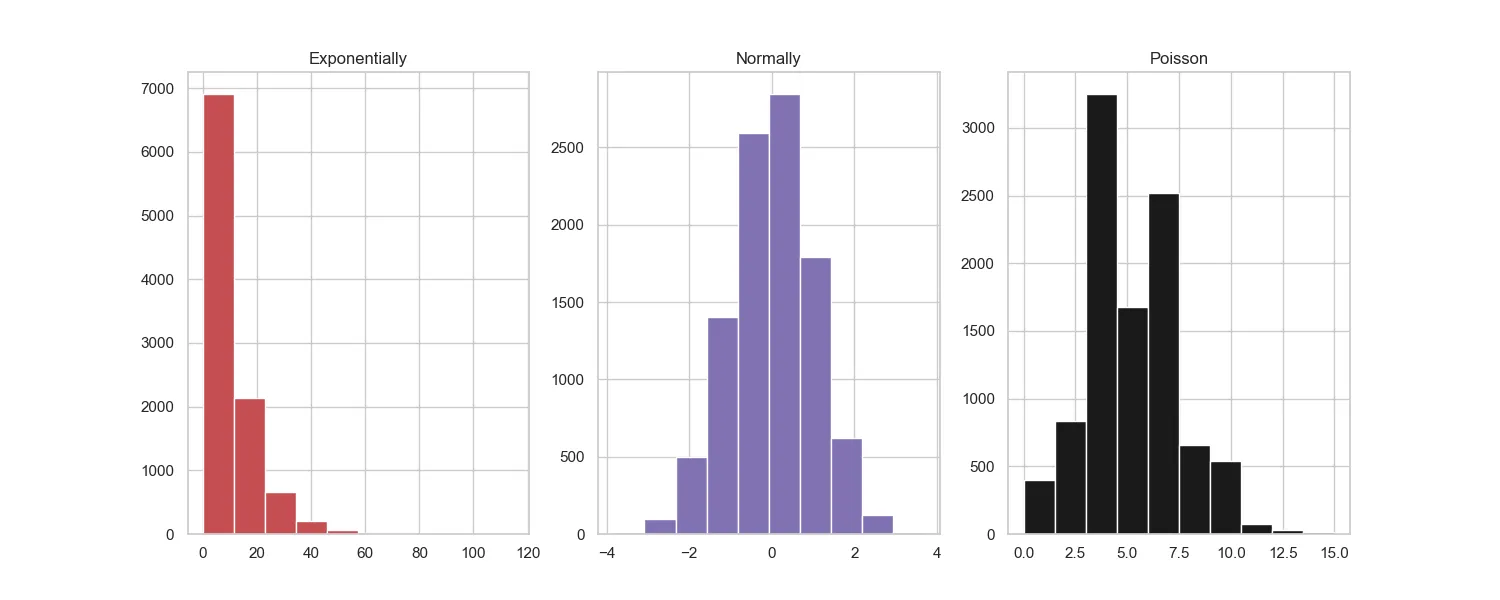我用以下代码生成了100个1到100之间的随机数:
def histogram():
for x in range(100):
x = random.randint(1, 100)
print(x)
现在我正试图用直方图来表示这些信息,我导入了matplotlib.pyplot作为plt并尝试构建直方图,但好像遇到了问题。
我尝试过:
def histogram():
for x in range(100):
x = random.randint(1, 100)
return x
histogram_plot = histogram()
plt.hist(histogram_plot)
plt.show()
我也尝试过:
def histogram():
for x in range(100):
x = random.randint(1, 100)
print(x)
plt.hist(x)
plt.show()
我做错了什么?


return意味着函数将在循环的一次迭代后返回。你真的不想这样做! - PM 2Ring